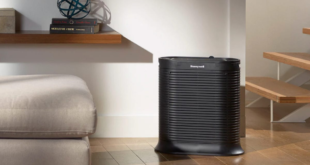Losing weight, while it seems easy, is more than just cutting back on food overall or avoiding those tempting treats. If your goal is to shed some pounds, you’ll first have to figure out how many calories you need to eat and how many calories you burn during a workout.
The number of calories someone needs to burn to lose weight healthily will vary by person. Working with a dietitian or nutritionist can help you establish a practical plan for your body’s specific needs. However, if that’s unavailable, you can learn on your own how to estimate how many calories you need to eat and burn daily to meet your weight loss goals.
To explain the process in greater detail, I consulted Jamie Maitland, renowned fitness instructor, certified holistic nutritionist and founder of The Office Health.
How do calories work?
A calorie is a unit of energy used to express how much energy you exert or consume daily. We need calories; they give the body fuel and the ability to function. The calories you intake that are not used are stored as body fat.
According to the USDA, adult females need to consume between 1,600 and 2,200 calories each day. The average male requires between 2,200 and 3,000 calories. These are just guidelines, and while most people may fall within these ranges, you might not. Body composition and total daily energy expenditure are the two factors that determine your basal metabolic rate.
Read more: The Expert-Approved Way to Count Calories
You burn calories just by living. That’s right, just reading this burns calories. So, whenever you clean your house or garden or do things that don’t feel like a workout, you’re burning calories. Unless you intentionally increase this activity level over some time, your current daily energy expenditure won’t necessarily cause you to lose weight.
How many calories should you burn to lose weight?
Everyone is different, so you’ll have different calorie goals than someone else. Maitland explained that several factors influence how many calories you need to burn to lose weight. They include your weight, age, gender, hormones and health conditions. Your lifestyle and attitude will also come into play.
“In order to really determine how many calories you need to burn to lose weight, you should realistically ask yourself what your goal weight is, and if you are willing to change the way you think in order to achieve those results,” Maitland said.
Calorie needs vary by person, the science behind weight loss is clear: you must be in a calorie deficit. You do this by either reducing the extra calories you’re consuming or burning more than what you’re eating with exercise.
You’ve probably heard of the 3,500-calorie deficit rule, which states that a pound of fat equals 3,500 calories. While this provides a basic framework, Maitland pointed out that it won’t apply to everyone. If you’re unsure where to start, Maitland suggests that you start simply and shave off 500 calories from your normal daily intake and monitor how you feel.
You should always consult your doctor first before making any changes to your diet. Whether you research yourself, meet with a health professional or find an accountability group, your weight loss goals are achievable.
How to calculate the number of calories you burn
If you’re looking for a way to figure out how many calories you burn in a day, a reliable way to do this is by first finding out your resting metabolic rate. Your RMR is the basic number of calories your body needs to function and maintain your weight. This doesn’t account for extra activities that you do during the day. There are a few methods to calculate your RMR, but the most reliable is the Mifflin-St Jeor equation. It calculates the number of calories you need to eat daily based on your assigned gender at birth, height, age and weight. The Mifflin-St Jeor equation looks like this:
Males: (10 × weight in kilograms) + (6.25 × height in centimeters) – (5 × age in years) + 5
Females: (10 × weight in kilograms) + (6.25 × height in centimeters) – (5 × age in years) – 161
If you’re looking to see how many calories you’ll need based on activity level, then you’ll need to multiply your RMR results with your activity level based on the following chart:
- 1.2 – Sedentary (little to no exercise)
- 1.375 – Lightly active (workout 1-3 days a week)
- 1.55 – Moderately active (workout 3-5 days a week)
- 1.725 – Very active (workout 6-7 days a week)
- 1.9 – Extra active (two-a-day workouts, active job)
Example: 5-ft 4-in, 125 pounds, moderately active woman, 29 years old
RMR: (10 × 56.699) + (6.25 × 162.56) – (5 × 29) – 161 = 1,276.99 calories
RMR x Activity Level: 1,276.99 x 1.55 = 1,979.3345 calories
What is a caloric deficit?
A caloric deficit is when you burn more calories than you eat in a day. As Maitland mentioned, it’s usually recommended to start a deficit by cutting back 500 calories a day from your diet. It’s important to remember that this may vary per individual so it’s best to consult with a professional before doing so.
Quick tips to cut 500 calories:
- Opt for healthy snacks like fruit or nuts
- Try to eliminate high-calorie treat each day
- Identify low-calorie swaps like using low-fat milk or plain yogurt instead of sour cream
- Cut out high-calorie drinks like sodas
- Use smaller bowls or plates
- Avoid fried foods as often as you can
Remember, calories don’t tell you the quality of food you’re eating. Focus on nutrient-rich foods that ensure your body and mind get what they need to function and flourish.
What are healthy weight loss goals?
Losing weight in a healthy and sustainable way is essential for meeting your goals. According to Maitland, a healthy weight loss goal is between 2 and 5 pounds a week. That doesn’t mean that if you’re not losing within that range, you’re doing it wrong. It’s simply a guideline for what is healthy and sustainable. You should expect it to vary each week.
“It’s important to understand the difference between water weight loss and actual fat loss. Regardless of how much weight you would like to lose, it’s imperative to set realistic goals and trust that even the smallest steps taken daily can make a difference. Consistency is the secret sauce,” Maitland said.
Weight loss is a long-term lifestyle change. Maitland highlighted that your weight loss will plateau if you don’t increase the deficit. So, your diet and exercise routines should be evaluated frequently to ensure they suit your goals. That said, if you achieve your goals and find a workout routine that works for you, it’s OK to stick with it.
How to track calorie burn when you exercise
It’s essential to track your progress when exercising, not only so you can see how far you’ve come but also to identify when you need a break.
How many calories you burn will vary by the duration and intensity of your workout, so it’s good practice to use a fitness tracker to simplify things. The top fitness trackers like Fitbit, Apple Watch and Whoop include your calorie burn throughout the day and during your tracked workouts.
Factors that contribute to how many calories you burn:
- Your heart rate zone: Smartwatches measure your heart rate zones, or how hard you’re pushing and recovery periods. Heart rate zones will change, so having a record will help you determine when you need to take your workout to the next level.
- Your natural resting heart rate: We all have a unique resting heart rate. The normal range falls between 60 and 100 beats per minute. Use your heart rate to inform how often you need to take breaks. For example, you may need to take more breaks if you have a naturally high heart rate.
- Your weight: How much you weigh will impact how many calories you burn while exercising. Someone who weighs less will burn less. It’s important to note that muscle mass burns more calories than body fat, so your weight will burn more calories if you regularly strength train.
- The type of workout: Strength training may not burn as many calories as cardio, though it’s important to include both sources to build muscle mass and avoid injury.
Read more: Best Fitness Tracker
Too long; didn’t read?
Understanding how calories and weight loss are related is the basis for any wellness journey. Whether you research yourself, meet with a health professional or find an accountability group, your weight loss goals are achievable.
The best part is that you don’t have to completely change your life to lose weight. You can find an exercise routine that works for you. Walking for 20 to 30 minutes daily can go a long way, and at-home exercises can do wonders for losing body fat. Counting calories doesn’t make sense for everyone, especially if you have a history of disordered eating.
“Your life doesn’t need to make sense to anyone but you. Find what motivates you, stick with it and the results will come,” Maitland advised.
Keep your fitness research going by learning when the best time to weigh yourself is, what foods to moderate and which exercises you should focus on to age gracefully.
 synnbiob
synnbiob


